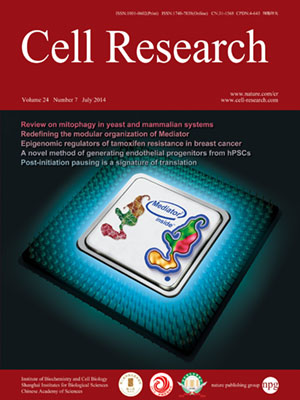
Volume 24, No 7, Jul 2014
ISSN: 1001-0602
EISSN: 1748-7838 2018
impact factor 17.848*
(Clarivate Analytics, 2019)
Volume 24 Issue 7, July 2014: 894-897
LETTERS TO THE EDITOR
Labeling native bacterial RNA in live cells
Paul Toran1, Irina Smolina2, Harry Driscoll2, Feng Ding3, Yingjie Sun2, Charles R Cantor4 and Natalia E Broude1,2
1Cell Biology, Molecular Biology and Biochemistry Program, Boston University, Boston, MA 01225, USA
2Department of Biomedical Engineering, Boston University, Boston, MA 01225, USA
3Department of Physics and Astronomy, 118 Kinard Lab, Clemson University, Clemson, SC 29634, USA
4Sequenom Inc, 3595 John Hopkins Court, San Diego, CA 92121-1331, USA
Correspondence: Natalia E Broude, E-mail: nebroude@bu.edu; Irina Smolina, E-mail:(ismolina@bu.edu)
Labeling RNA molecules in their physiological environment is still a technological challenge that should be overcome to study kinetics, localization and protein interactions of these ubiquitous cellular regulators. The only non-invasive method applicable for detecting unmodified RNAs in live cells described so far used two RNA-binding pumilio proteins directly interacting with RNA that triggered complementation of the split fluorescent protein (FP) fused to pumilio proteins1,2. To use this as a universal method, the pumilio proteins should be subjected to mutagenesis to bind each new target RNA. Protein mutagenesis is a time-consuming process and it limits application of this approach. Another method that used RNA-templated protein complementation has been developed but used for in vitro RNA detection only3. Therefore, detection of unmodified RNAs in vivo remains a daunting problem.
10.1038/cr.2014.47
FULL TEXT | PDF
Browse 2322


